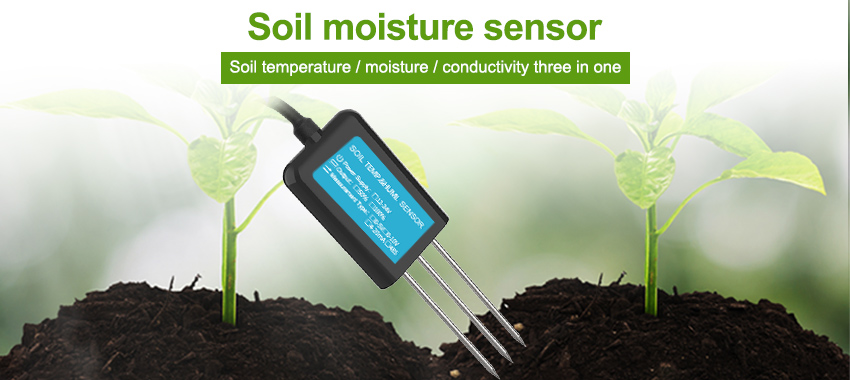Agriculture has come a long way over the years, from relying on traditional farming methods to embracing innovative technologies. One such technology that is revolutionizing the agricultural industry is the use of soil sensors. These sensors provide farmers with valuable data-driven insights into soil conditions, enabling them to make informed decisions and optimize crop production. In this article, we will explore the power of soil sensors and how they are transforming agriculture through data-driven insights.
Understanding Soil Sensors
Soil sensors are advanced devices that are d

eployed in agricultural fields to measure various soil parameters. These parameters include moisture content, nutrient levels, temperature, pH levels, and salinity. Soil sensor systems typically consist of multiple sensors strategically placed across the field, connected to a central data collection unit or a wireless network. The collected data is then transmitted to a cloud-based platform for analysis.
Real-Time Monitoring of Soil MoistureSoil moisture plays a pivotal role in crop growth and development. With accurate and real-time measurements of soil moisture, farmers can optimize irrigation schedules and prevent both under and overwatering, leading to improved water management and cost savings. Soil sensors provide continuous monitoring of soil moisture, allowing farmers to understand the water-holding capacity of different soil types and make precise irrigation decisions based on actual plant needs.
Optimizing Fertilizer ApplicationThe nutrient content of the soil directly impacts crop health and productivity. Soil sensors offer valuable insights into nutrient levels, such as nitrogen, phosphorus, and potassium. By accurately measuring these nutrients, farmers can determine the specific needs of their crops and optimize fertilizer application accordingly. This data-driven approach helps prevent nutrient deficiencies or excesses, leading to improved crop yields and reduced environmental impact.
Managing Soil pH and Temperature
Soil pH and temperature are critical factors that influence plant growth and nutrient availability. Soil sensors provide real-time data on these parameters, enabling farmers to make informed decisions to improve soil conditions. By adjusting pH levels through soil amendments, farmers can create an optimal environment for different crops. Monitoring soil temperature helps farmers understand the impact of temperature on plant growth rates and microbial activity, allowing them to make informed decisions about planting schedules and crop selection.
Detecting Soil Salinity
Soil salinity is a significant challenge in many agricultural regions worldwide. Excessive salt accumulation can inhibit plant growth and reduce yields. Soil sensors equipped with electrical conductivity (EC) sensors can detect soil salinity levels. By monitoring EC, farmers can identify areas with high salinity and implement appropriate mitigation measures such as leaching or selecting salt-tolerant crop varieties. Data-driven insights from soil sensors enable farmers to effectively manage soil salinity and optimize crop production.
Analyzing Soil Data
The true power of soil sensors lies in their ability to generate vast amounts of data. However, this data is only valuable if properly analyzed and interpreted. Advanced data analytics and machine learning algorithms can process large volumes of sensor data quickly and accurately. By leveraging these techniques, farmers can gain actionable insights from the data collected by soil sensors. They can identify trends, patterns, and correlations that may not be visible to the naked eye, thus making data-driven decisions to optimize crop management practices.
Integration with Precision Agriculture Systems
To maximize the benefits of soil sensors, integration with precision agriculture systems is crucial. Precision agriculture combines data from various sources, including soil sensors, weather stations, satellite imagery, and crop sensors. By integrating these different data sets, farmers can gain a holistic understanding of their fields and implement precise management practices. For example, combining soil moisture data from sensors with weather data can help farmers schedule irrigation based on predicted rainfall, reducing water waste and maximizing crop productivity.
Overcoming Challenges
While soil sensors offer immense potential, there are challenges that need to be addressed. Sensor calibration, maintenance, and data interpretation require expertise and ongoing attention. Additionally, the cost of implementing soil sensor systems can be a barrier for some farmers. However, as technology advances and economies of scale are realized, the costs are expected to decrease, making soil sensors more accessible to a wider range of farmers. Education and training programs can also help farmers better understand the benefits and effective use of soil sensors.






